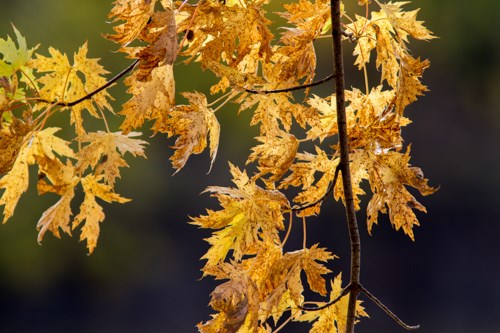
NPS/Gordon Dietzman IntroductionA mature silver maple may grow 40-80’ tall, but much larger examples are cited in the literature. The trunk of a mature specimen is often forked low into several large upright branches with gray bark that tends to flake or peel leaving the tree with splotches of reddish brown bark beneath. The leaves are maple-like, but are deeply cut as the photograph shows. The silver maple is most often found naturally in floodplain forests and make up a significant percentage of trees found in lowland forests within the Mississippi National River and Recreation Area. It has, however, been widely planted as an ornamental tree in upland suburban areas, but its roots often damage sidewalks and sewer systems, its branches are brittle and break easily, and prodigious seed production litters lawns and clogs rain gutters. Fascinating Facts
Find ItSilver maples are common throughout the Mississippi National River and Recreation Area. They tend to favor floodplains rather than uplands, but they have been widely planted in our area as decorative trees. Want to Help Us Better Understand the Park?See our iNaturalist project, "The Life of the Mississippi National River and Recreation Area" and contribute to it by downloading the iNaturalist app and uploading your sightings of this species, and others, to the project. You can also upload your sightings from your computer. |
Last updated: March 7, 2018
